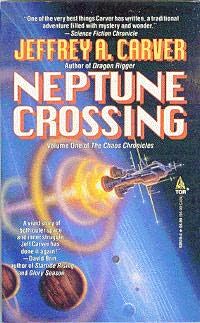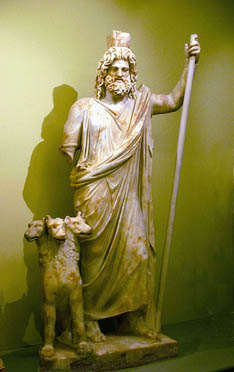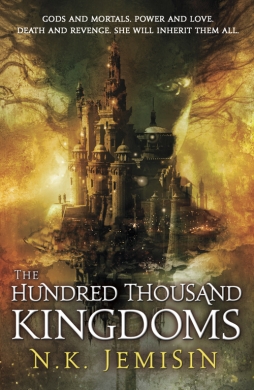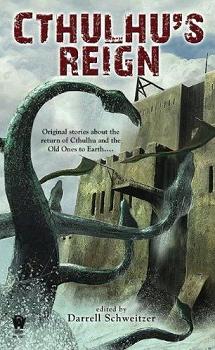March/April Fantasy & Science Fiction Magazine Now on Sale
 The March/April double issue of Fantasy & Science Fiction goes on sale today.
The March/April double issue of Fantasy & Science Fiction goes on sale today.
Click on the image at left for a full-sized version of the cool cover art by Kent Bash, illustrating Sheila Finch’s novella “The Evening and the Morning.”
In addition to Finch, this issue features novelets by Albert E. Cowdrey and Francis Marion Soty, and short stories by Paul Di Filippo, James Patrick Kelly, Kali Wallace, James Stoddard, and others.
It also includes “Night Gauntlet,” a short story attributed to no less than six authors: Walter C. DeBill, Jr., Richard Gavin, Robert M. Price, W. H. Pugmire, Jeffrey Thomas, and Don Webb. Looking forward to that one!
F&SF is published six times a year; issues are a generous 258 pages. It is the longest-running professional fantasy magazine in the country, and has been published continuously since 1949. It is a great way to sample some of the fast-rising new names in fantasy.
The cover price is $7.50; one year-subscriptions are a bargain at $34.97, and include the giant October/November anniversary issue. You can order subscriptions and browse their blog at www.sfsite.com/fsf/.
We covered the Jan/Feb issue of F&SF here.

 As of Sunday evening, The King’s Speech is the newest Academy Award winner for Best Picture. I am sure a virulent backlash against the English period drama is already underway, but let the record show that I thoroughly enjoyed that movie. It is not my personal pick for the best film of 2010. I would have liked Black Swan, Inception, or True Grit to win, but such was not to be, and The King’s Speech as a winner doesn’t anger me.
As of Sunday evening, The King’s Speech is the newest Academy Award winner for Best Picture. I am sure a virulent backlash against the English period drama is already underway, but let the record show that I thoroughly enjoyed that movie. It is not my personal pick for the best film of 2010. I would have liked Black Swan, Inception, or True Grit to win, but such was not to be, and The King’s Speech as a winner doesn’t anger me.
 Neptune Crossing (The Chaos Chronicles, Volume 1), by Jeffrey A. Carver
Neptune Crossing (The Chaos Chronicles, Volume 1), by Jeffrey A. Carver

 The episode starts with the Angel turned scam artist Balthazar showing up, hastily explaining that the Angel Raphael is winning the civil war in Heaven and has put a hit out on the Angel Castiel and everyone else who opposed him, including Balthazar, Sam, and Dean. In order to protect his stash of stolen weapons from Heaven, Balthazar gives Sam and Dean a key and casts a spell. They are thrown through a window … only to land on a stunt pad.
The episode starts with the Angel turned scam artist Balthazar showing up, hastily explaining that the Angel Raphael is winning the civil war in Heaven and has put a hit out on the Angel Castiel and everyone else who opposed him, including Balthazar, Sam, and Dean. In order to protect his stash of stolen weapons from Heaven, Balthazar gives Sam and Dean a key and casts a spell. They are thrown through a window … only to land on a stunt pad. While
While  One of my very own stories has just been included in the TANGENT ONLINE RECOMMENDED READING LIST for 2010. The tale is “This Is How the World Ends,” from the CTHULHU’S REIGN anthology (DAW).
One of my very own stories has just been included in the TANGENT ONLINE RECOMMENDED READING LIST for 2010. The tale is “This Is How the World Ends,” from the CTHULHU’S REIGN anthology (DAW). Also on the list is a terrific story by an amazing writer, “In the Dreaming House” by Darrell Schweitzer, which ran in SPACE & TIME #110. Nobody writes a dark fantasy tale like Darrell…he is a true Master. BTW, you can still order this issue from the SPACE & TIME website. I’ve also got a new story, “The Gnomes of Carrick County,” coming up in S&T later this year.
Also on the list is a terrific story by an amazing writer, “In the Dreaming House” by Darrell Schweitzer, which ran in SPACE & TIME #110. Nobody writes a dark fantasy tale like Darrell…he is a true Master. BTW, you can still order this issue from the SPACE & TIME website. I’ve also got a new story, “The Gnomes of Carrick County,” coming up in S&T later this year. 